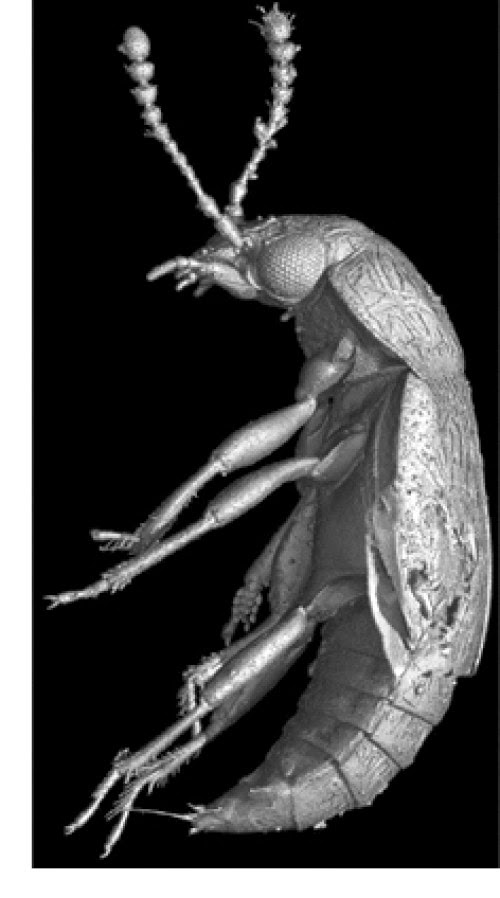
An international team of scientists from Spain, France, and the U.S. has discovered and described a rove beetle that is the oldest definitive member of the tribe Omaliini that has ever been found in amber. The discovery and description were made possible through the use of the propagation phase-contrast X-ray synchrotron imaging technique, which allows the detailed study of otherwise invisible specimens in opaque amber.
The new species is described in the journal Annals of the Entomological Society of America in an article called “Oldest Omaliini (Coleoptera: Staphylinidae: Omaliinae) Discovered in the Opaque Cretaceous Amber of Charentes.”
The tribe Omaliini belongs to the subfamily Omaliinae, which belongs to the family Staphylinidae, the largest of all of the beetle families, with more than 60,000 described species.
Two specimens of the “new” species, called Duocalcar geminum, were found in a single piece of opaque amber, along with other arthropods that were embedded in the same piece of amber.
The genus name, Duocalcar, means “two spurs” in Latin, “alluding to the two distinctive projections on each hind leg, at the trochanteral apex and near the tibial apex.” The specific epithet, geminum, is a Latin adjective meaning “twin-born,” in reference to the discovery of both specimens in the same piece of amber.
“D. geminum is the first Omaliinae described from any amber, increasing the minimum age of Omaliini to ≈100 million years, from Eocene to latest Albian,” the authors wrote.
Journal Reference:
Peris, D., Thayer, M. K., Néraudeau, D. Oldest Omaliini (Coleoptera: Staphylinidae: Omaliinae) Discovered in the Opaque Cretaceous Amber of Charentes. Annals of the Entomological Society of America, 2014 DOI: 10.1603/AN14047
Note : The above story is based on materials provided by Entomological Society of America.










